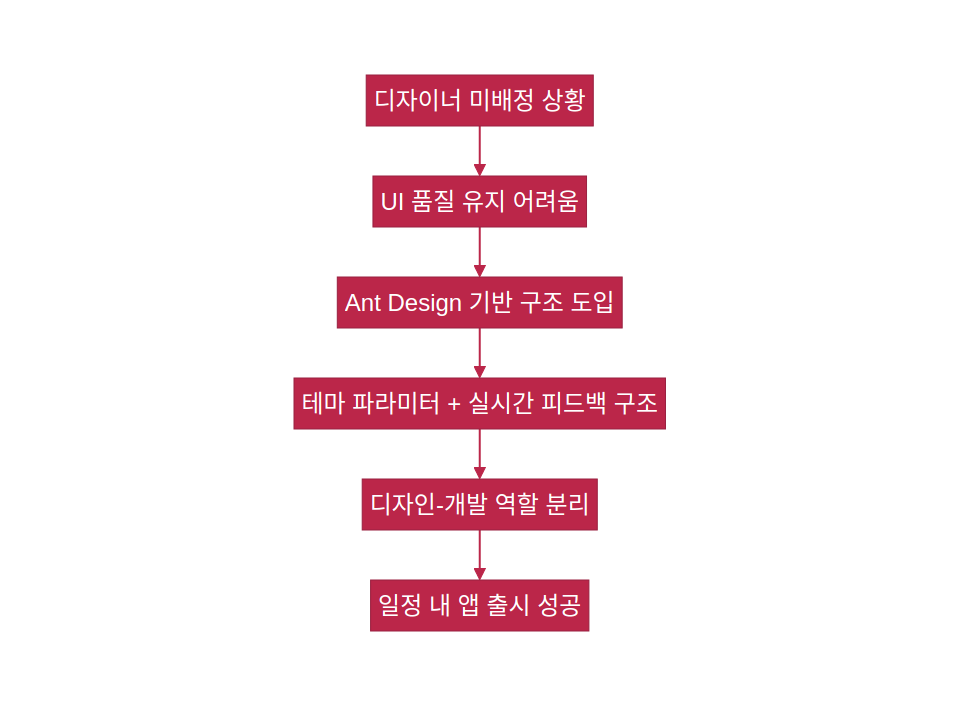Show Cover Slide

Designing App Architecture to Maintain Quality and Speed Without a UI/UX Designer
gpt-4-turbohas translated this article into English.
Structural Design Case Study for Delivering an App on Schedule While Maintaining Design Quality Without a UI/UX Designer
We approached the situation with the philosophy that when lacking personnel, one should design processes, not tools.
Problem Recognition
We were in a situation where we needed to develop an app
but no UI/UX designer was assigned.
We had to proceed without a planner, and
all design decisions fell to the developers,
risking design quality, collaboration efficiency, and adherence to schedules.
My Design Philosophy
In situations with a lack of personnel, ‘flow’ rather than ‘function’ should be designed first.
I believe that in such times, the role of a structural designer is
to create a system that does not require communication.
Alignment rather than communication, interfaces rather than agreements are key.
Design Direction
-
Adoption of Ant Design-based front-end framework
→ Even without UI design, structurally stable component-based screen configuration is possible. -
Collaboration with a publishing designer to introduce a theme parameter system
→ Visual elements such as color, typography, and spacing are variable through code. -
Design of a theme editor capable of real-time deployment
→ Designers can adjust styles directly and see results immediately. -
Viewer page-based communication system
→ Designing a feedback loop focused on results, not explanations.
Results
- Maintained UI quality without a designer
- Developers focused on components, designers on themes
- Completed app delivery without schedule delays
- Structured the same architecture for reusable form → Applicable repeatedly in Lean organizations
In Conclusion
A structure that collapses without people is an un-designed structure.
Through this case study, I reconfirmed that the role of a structural designer is not to compensate for a team’s deficiency
but to create a structure that can manage that deficiency.
In organizations that operate Lean,
it is crucial to have structural designs that can “function without a designer.”
Go Home